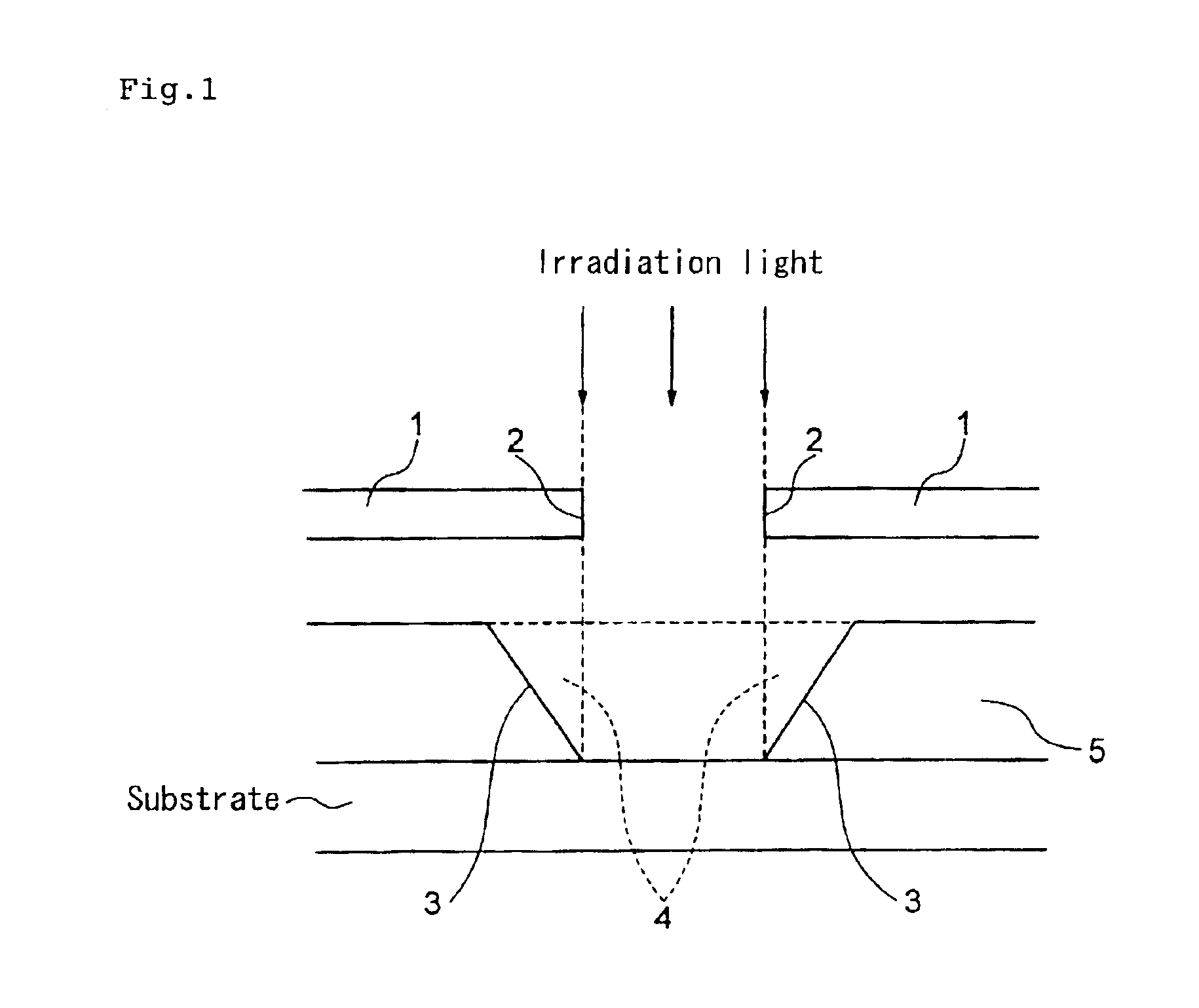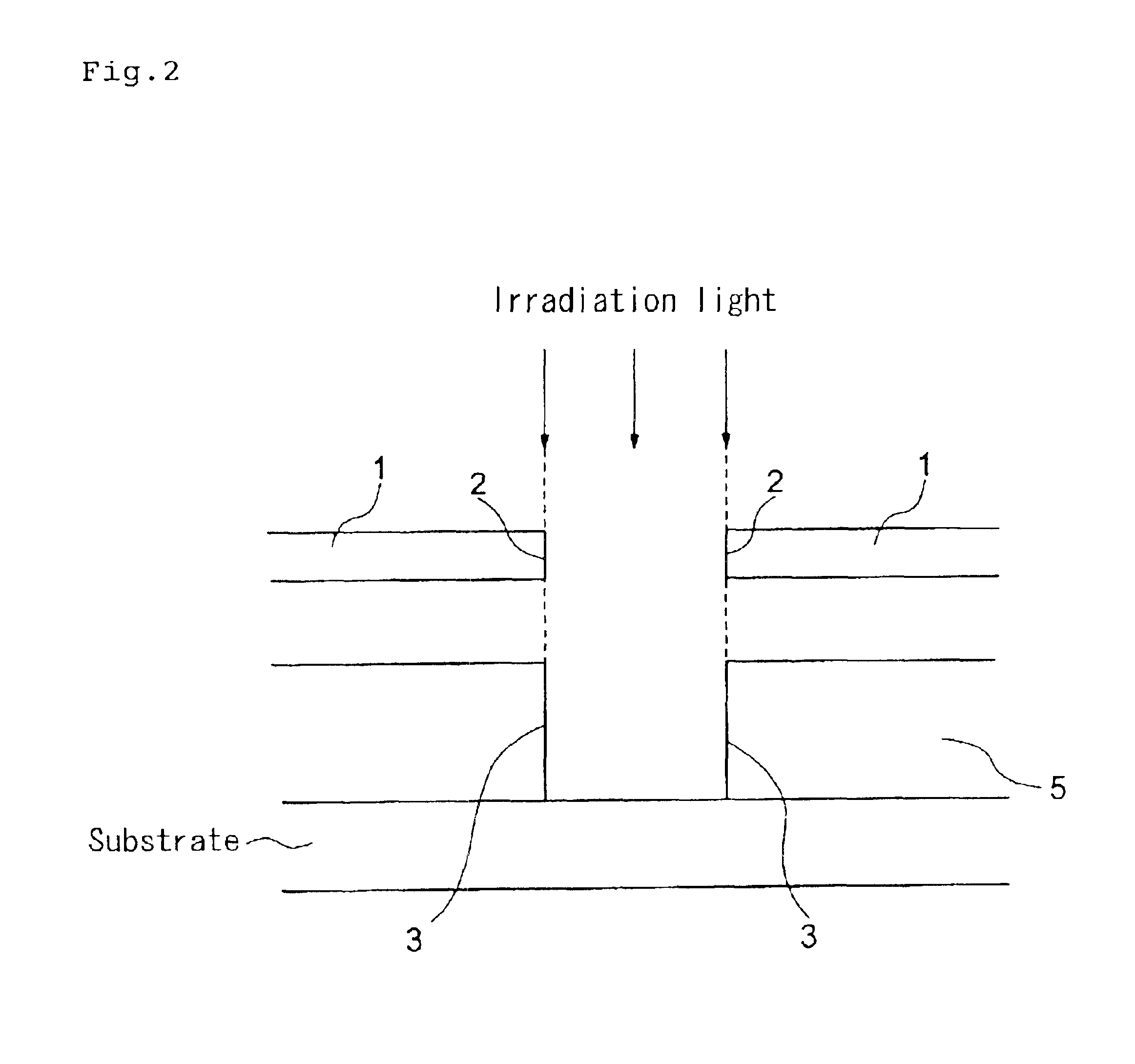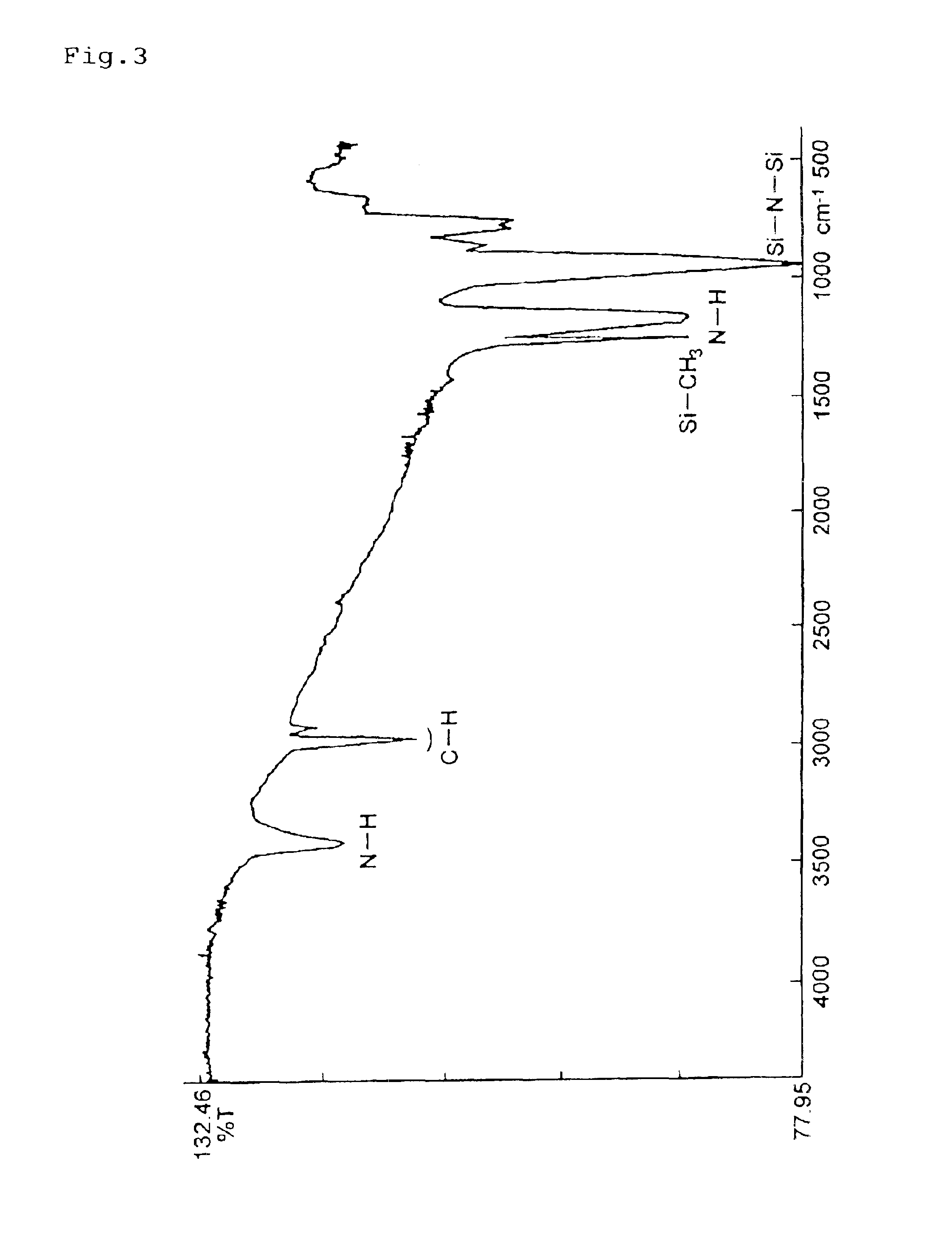Photosensitive polysilazane composition, method of forming pattern therefrom, and method of burning coating film thereof
- Summary
- Abstract
- Description
- Claims
- Application Information
AI Technical Summary
Benefits of technology
Problems solved by technology
Method used
Image
Examples
example 2
[0131]The same procedure as in Example 1 was repeated except that in place of 2-nitroaniline, 2-nitropropane was added in an amount of 1% by weight relative to the modified poly(sil sesquiazane).
example 3
[0132]The same procedure as in Example 1 was repeated except that in place of 2-nitroaniline, propylene carbonate was added in an amount of 5% by weight relative to the modified poly(sil sesquiazane).
example 4
[0133]The same procedure as in Example 1 was repeated except that in place of 2-nitroaniline, a water-soluble acrylic polymer (acrylic polymer “Alon A-20P” (trade name) produced by Toagosei Chemical Industry Co., Ltd.) was added in an amount of 10% by weight relative to the modified poly(sil sesquiazane).
[Comparison of the Angles of Inclination]
[0134]The inclination angles of the patterned films obtained in Examples 1 to 4 and Comparative Example 1 are as follows:
[0135]
ExampleAngle of inclination (degrees)Example 190Example 290Example 390Example 490Comparative Example 170
[Comparison of the Characteristics of the Burned Films]
[0136]Then, the pattern films obtained in Examples 1 to 4 and Comparative Example 1 were burned under the following conditions. The burned films were measured in the following manner for their dielectric constant and film hardness and evaluated for their usefulness as inter-layer dielectric.
Burning Conditions
[0137]Each patterned film was pre-heated on a hot plat...
PUM
| Property | Measurement | Unit |
|---|---|---|
| Percent by mass | aaaaa | aaaaa |
| Relative humidity | aaaaa | aaaaa |
| Relative humidity | aaaaa | aaaaa |
Abstract
Description
Claims
Application Information
 Login to View More
Login to View More - R&D
- Intellectual Property
- Life Sciences
- Materials
- Tech Scout
- Unparalleled Data Quality
- Higher Quality Content
- 60% Fewer Hallucinations
Browse by: Latest US Patents, China's latest patents, Technical Efficacy Thesaurus, Application Domain, Technology Topic, Popular Technical Reports.
© 2025 PatSnap. All rights reserved.Legal|Privacy policy|Modern Slavery Act Transparency Statement|Sitemap|About US| Contact US: help@patsnap.com



